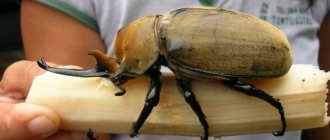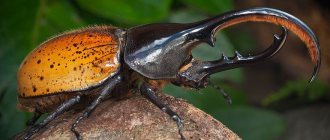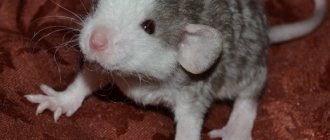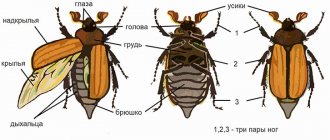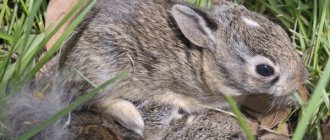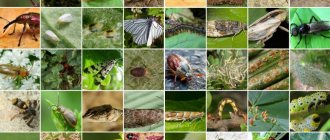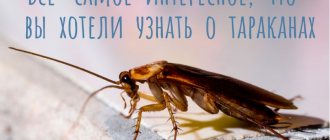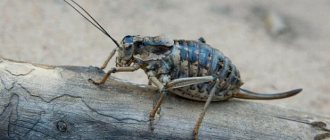Coleoptera is one of the most numerous orders of insects, which includes over 400 thousand species. Among them are the well-known ladybugs, May and Colorado beetles, ground beetles, rhinoceros beetles, weevils, and many others. Despite their significant differences in appearance, all beetles have a number of identical characteristic features and characteristics. It is worth noting that about 13.5 thousand species live in Russia. Among them are pests that cause damage to agriculture. However, there are also those that are beneficial. For example, farmers use ladybugs, rove beetles, blister beetles, marigolds and other predatory insects as a safe biological way to control many pests.
Hungarian ground beetle
Features of the structure and body parts of the cockchafer
Insects number about 1.5 million species and are the largest group in the animal kingdom.
A typical representative of the class is the cockchafer, which belongs to the order Coleoptera. The body is 2-2.5 cm long, covered with chitin and clearly divided into head, chest and abdomen.
The head is covered with a chitinous capsule and is formed by four fused segments.
It contains the sensory organs and oral apparatus. On the sides of the head there is a pair of compound eyes, in front of which there are a pair of antennae with widened plates at the end.
Males have larger plates than females. The antennae serve as olfactory organs. On the lower surface of the head there is a mouth surrounded by gnawing-type mouthparts. They consist of an upper lip covering the front of the mouth, a pair of upper and two pairs of lower jaws.
The first pair of them is located on the sides of the mouth, and the second one grows together into an unpaired plate - the lower lip. The upper lip and upper jaw are unsegmented, and the lower jaws are multi-jointed. Their lateral processes form the mandibular palps, which are organs of touch and taste.
Due to the variety of feeding methods, the gnawing mouthparts, primary for all insects, are modified into piercing-sucking (mosquitoes), licking (flies), gnawing-lacking (bees), sucking (butterflies).
In insects that do not feed as adults (mayflies, gadflies), the oral organs are completely reduced.
The chest is formed by three segments, to each of which a pair of jointed limbs is attached to the ventral side.
The limb of a beetle consists of five sections. On the last segment of their legs there is a pair of claws, with which the beetle clings to the surface of leaves and tree branches. On the dorsal side, a pair of wings is attached to the mesothoracic and metathoracic segments. The first pair of wings are flat, chitinous elytra. They serve as a cover for the second pair of membranous wings, and during flight they act as load-bearing planes.
Membranous wings create air currents and lift when moving in flight. There are two pairs of spiracles on the sides of the chest.
The beetle's abdomen is fixedly connected to the chest and consists of 8 segments.
From above it is covered with elytra. On the sides of the dorsal side of the abdomen there are 8 pairs of spiracles, through which air enters the trachea.
The muscular system of insects is represented by striated muscle tissue and is distinguished by its highly complex structure due to the specialization of its elements.
Muscles ensure the mobility of individual parts of the body relative to each other and its movement in space.
The cockchafer is a herbivore and feeds on young leaves of birch, maple and other trees. Using the upper jaws, it bites off pieces of leaf blades and crushes them with the lower jaw. Through the mouth, food enters the pharynx, esophagus, crop, stomach, where it is ground with the help of chitinous plates and then sent to the midgut.
In its initial section there are several blind tubular outgrowths. They increase digestion and
the absorptive surface of this part of the intestine. Undigested food remains enter the ectodermal hindgut and are thrown out through the anus.
Excretion functions in insects are performed by different formations.
First of all, these are numerous tubes (Malpighian vessels) - opening into the intestinal lumen at the border of the middle and hind intestines. From the hemolymph, dissimilation products in the form of uric acid salts enter the cavity of the Malpighian vessels, where they crystallize.
Uric acid crystals are expelled from the intestines along with undigested food debris. In addition, the excretory function is performed by the fat body. Its main function is the accumulation of a supply of nutrients (proteins, glycogen, fats), due to which insects can starve for a long time. But, along with this, in the fat body throughout life there is an accumulation of metabolic products that are not released into the external environment.
The respiratory organs are represented by the trachea -
a system of tubes of ectodermal origin.
The respiratory organs begin on the surface of the body with spiracles that lead to the main tracheal trunks. From them originate thinner tracheas, branching into tubes entwining the organs. Each trachea ends with a terminal cell, from which radially thin processes diverge, penetrating into individual cells. Ventilation of the trachea is carried out by contraction and relaxation of the abdomen.
The circulatory system of insects is open and relatively poorly developed, which is due to the structural features of the respiratory system.
The multichamber tubular heart is located on the dorsal side of the abdomen. Its rear end is blindly closed. The anterior one continues into the cephalic artery, which opens with an opening into the head cavity. The heart is surrounded by a pericardial sac, where hemolymph from the body cavity is collected and enters the heart cavity through openings with valves.
Hemolymph is a colorless or yellowish liquid that contains white blood cells. In the larvae of some mosquitoes it is red in color due to hemoglobin dissolved in it.
The nervous system is built according to the type of the abdominal nerve cord.
Its central section includes the brain, subpharyngeal ganglion and segmental nodes of the ventral nerve cord. The brain consists of three sections: anterior, middle and posterior. It innervates the eyes and antennae. In the anterior part of the brain, the mushroom bodies, which are associative centers, are highly developed.
The subpharyngeal node innervates the oral organs, and the thoracic nodes of the ventral nerve chain innervate the organs of movement. The high level of development of the nervous system determines the complexity of the instinctive behavior of insects. Instincts are innate reflex complexes of reactions.
Immediately behind the brain, above the intestinal tube, are the endocrine organs - the cardiac and adjacent bodies.
They accumulate neurosecrets produced by cells of the nervous system. Entering the hemolymph, they regulate the activity of other endocrine organs responsible for the normal course of development processes, metabolism, and molting.
The senses are varied and well developed.
The organs of vision in beetles are represented by a pair of complex compound eyes. Some insects also have simple eyes located on the crown of the head. Olfactory receptors are located mainly on the antennae. The sense of smell is used to search for food and sexual partners. Females find the latter by the smell of special odorous substances - attractants secreted by males. The organs of touch are represented by numerous bristles scattered over the entire surface of the body.
Taste buds are located on the mandibular palps. In addition, insects have thermoreceptors and baroreceptors.
Reproduction of the cockchafer
May beetles, like all insects, reproduce only sexually. These are dioecious animals with pronounced sexual dimorphism. The gonads in males and females are paired and are located in the abdomen.
Fertilization is internal and occurs in the spring.
Fertilized females feed intensively on leaves and accumulate a supply of nutrients necessary for the maturation of eggs. The female lays mature eggs in the soil, where they develop.
In insects, the process of individual development is divided into two periods: embryonic and postembryonic.
In the May beetle, embryonic development ends at the end of summer with the formation of a larva. Its body is worm-shaped, arched and covered with soft chitin. The spiracles are located on the sides of the body. The larva feeds on humus and with the onset of autumn moves into the deep layers of the soil. Postembryonic development begins with it. In the spring of next year, the larva rises to the surface layers of the soil, feeds on the roots of herbaceous plants and pine seedlings, grows, and goes deep into the soil for the winter.
From the spring of the second year, the larva lives in the soil, feeding on the roots of trees and shrubs. Having overwintered for the third time and greatly increased in size, at the end of spring the larva goes deeper into the soil, sheds its chitinous cover and turns into a pupa. This is the resting stage in the postembryonic development of the beetle. Under the chitin of the pupa, the mouthparts, limbs, compound eyes, antennae, and small wings are clearly visible. Due to the nutrients stored by the larva, the formation processes of organ systems inherent in an adult insect are completed in the pupa.
By autumn, the cuticle breaks and an adult insect emerges from the pupa. The beetle spends the winter in the ground, and in the spring of next year it comes to the surface and begins to reproduce.
Thus, the development of the beetle from egg to sexually mature form lasts three years and proceeds with complete transformation.
The cockchafer belongs to the order Coleoptera. Representatives of the detachment are characterized by the following characteristics:
1.
Two pairs of wings, one of which is a rigid elytra.
2.
Gnawing type mouthparts
3.
Development with complete transformation.
Colorado beetle
It belongs to the order Coleoptera and is one of the currently widespread pests of human-cultivated nightshades.
Before cultivating potatoes, he lived on wild nightshades. It was first noted as a pest of potato crops in 1865 in the state of Colorado, where it got its name. From here the beetle spread throughout North America, but around 1920 it was brought to Europe.
Gradually spreading to the East, it began to be found in vast territories and in Russia.
Harm is caused by both adult beetles and their larvae. The body of the beetle is broadly oval, dimensions 8-10 mm. A characteristic feature is the presence of 10 longitudinal black stripes on the hard orange-yellow elytra.
Mature forms overwinter in the soil. In the spring, overwintered individuals feed on the foliage of young potato shoots for a month, after which they begin to lay eggs on the underside of the leaf (in groups of 20-40 pieces). After 5-6 days, larvae emerge from them and feed on potato leaves.
After 2-3 weeks they burrow into the ground and pupate. During a season, 2-3 generations of beetles can develop. Under favorable conditions, beetles disperse, flying tens of kilometers from their breeding sites. The fight is carried out using chemicals that destroy both beetles and larvae. The natural enemies of the beetle are the lebia ground beetle, the picromerus bug, and tahina flies.
Insects with incomplete metamorphosis
Primary wingless
Let's consider insects with incomplete metamorphosis. These are, first of all, the most ancient and primitive primary wingless creatures, whose ancestors never had wings. These insects are represented by 4 orders:
Double-tailed Earwig, not to be confused with the Earwig
- bessyazhkovye, or protura (Protura),
- springtails, or springtails (Collembola),
- two-tailed or forktails (Diplura)
- Bristletails (Thysanura).
Springtails are interesting because they are widespread throughout the Earth and penetrate further than other insects into the Arctic and highlands. Some species even live in Antarctica!
Cockroaches
Madagascar cockroaches. By the way, this is also an example of sexual dimorphism
Insects from the superorder cockroaches (cockroaches, termites, mantises) are not similar in lifestyle and appearance, but have common ancestors who lived approximately 350 million years ago. The most ancient and primitive of them are cockroaches (Blattoptera). Of the more than 4.5 thousand species of cockroaches, only a few species are annoying companions to humans, while others live in the wild in a variety of places.
Termites and praying mantises are specialized groups. Termites (Isoptera) are social insects with pronounced polymorphism. In their behavior and way of life, they are closer to bees and ants, but differ significantly from them morphologically. With their strong jaws, termites are able to grind anything, causing great harm in their habitats. The large, elongated body of praying mantises (Mantodea) has a characteristic posture, hence their name. However, the appearance of praying mantises is deceptive. They are terrifying predators that mercilessly kill their prey with their strong jaws.
Some representatives:
- Marble cockroach
- Turkmen cockroach
- Argentine cockroach
- Death's head cockroach
Stick insects
The Australian stick insect feeds on eucalyptus and its eggs develop in anthills
Representatives of the order of ghost or stick insects (Phasmatodea) are also interesting. Stick insects live mainly in the tropics, with the exception of 7 species found in Transcaucasia, Central Asia and Southern Primorye. These amazing creatures are called ghostly creatures because they have the most varied body shapes (sticks, leaves, etc.), thanks to which they are completely invisible in their habitats. Stick insects reproduce mainly by parthenogenesis.
Orthoptera
The order Orthoptera includes: grasshoppers, grasshoppers, crickets, mole crickets and locusts. The order includes more than 20 thousand species - 24,481 species as of 2013, including 651 fossil species. Extinct representatives have been known since the Carboniferous period. Orthoptera are distinguished by strong legs adapted for jumping. Another feature of them is the presence in males of special organs that produce sounds - creaking or chirping, as well as the presence of hearing organs, which are also located on the legs.
Some representatives of the squad:
- House cricket
- Two-spotted cricket
- banana cricket
- Migratory locust
- Italian Prussian
- Moroccan locust
- Blue-winged filly
Bedbugs
Larvae of the bug Leptoglossus clypealis, feeding on pistachio trees
In the suborder of bedbugs (Heteroptera) we encounter parasites of animals and humans, plant pests, free-living and secondary aquatic (returned to water) forms. Bedbugs are ancient insects known since the Carboniferous period. Nowadays, there are about 40 thousand species of bedbugs. They are also called hemipterans, because the front part of the elytra of bedbugs is chitinous, and the back part is soft membranous. All bugs of temperate latitudes emit a pungent odor, while tropical ones, on the contrary, emit an aroma reminiscent of the aroma of daffodils or hyacinths. It is believed that this is a means of intimidation. Blood-sucking bugs live in burrows and nests and can be carriers of pathogens of a number of infectious diseases. The fight against them is complicated by their ability to undergo long-term (up to six months) fasting.
Homoptera
The suborder Homoptera includes various cicadas, grass flea beetles, aphids, scale insects and scale insects. Aphids and grass flea beetles are serious plant pests. Among the cicadas we find one of the longest-living insects. This is an American periodical cicada, the larvae of which develop for 17 years.
Lantern Pyrops candelaria
General characteristics of the class
They live in soil, water, plant tissues, animals and humans.
Fertility:
- queen bee - 1,500,000 eggs in her entire life (lives 5 years).
- termite queen - 10,000,000 eggs per life (lives 10 years).
Benefit:
- pollinate plants;
- destroy field pests;
- gardens and vegetable gardens.
Harm:
- blood-sucking (affect milk yield);
- carry pathogens from animals to humans (lice - typhus, relapsing fever; mosquitoes - malaria; flies - eye diseases).
Types of mouthparts:
- gnawing - beetles, cockroaches, grasshoppers;
- sucking - butterflies;
- piercing - mosquito;
- licking - fly;
- gnawing-licking - bees, gadflies, wasps, bumblebees, hornets.
Vision is complex (faceted).
A person distinguishes about 60 individual colors; bees see yellow, blue-green, blue, ultraviolet (butterflies see red).
The shape of objects is distinguished - predatory (dragonflies, tyrs...); social (ants, bees, wasps).
The sense of smell is on the antennae (butterfly - 2-3 km).
Taste organ on the mouth parts (jaws, lips, palps).
Just like humans, they distinguish between sweet, sour, salty, and bitter.
Sense organs are well developed and provide insects with great information about the external environment.
Insects with complete metamorphosis
Beetles
Darkling beetle
Beetles (Coleoptera) or Coleoptera are so named because they have fully chitinized elytra. Among insects, beetles occupy first place in the number of species (almost 400 thousand species in the world fauna and more than 14 thousand in Russia). Beetles, like other new orders of insects, develop according to the type of complete transformation. In general, all beetles are similar to each other, but differ greatly in size and weight: from 0.25 mm to 18 cm and from 0.4 mg to 30 g, respectively. Beetles have been known since the Permian period. They live everywhere. Most of them feed on plants and organic matter, but there are also predators. Beetle larvae develop in the soil and on or inside plants. There are many dangerous pests known among beetles; predatory species are generally beneficial.
Hymenoptera
Hymenoptera (wasps and bees) and Diptera (flies)
Unlike beetles, individual representatives of the order Hymenoptera (Hymenoptera) are very small (up to 0.1 mm). These include well-known insects: ants, bees, wasps, bumblebees. Adult Hymenoptera have two pairs of transparent wings with a small number of veins, but there are also some, such as worker ants and some others, that have no wings at all. More than 150 thousand species of Hymenoptera are known. 23 species of Hymenoptera (including 8 species of bumblebees) are listed in the Red Book of Russia. Among these insects there are many herbivorous species that damage various parts of plants (sawflies and horntails). Some species feed on nectar and pollen (bees and wasps), and parasites of other insects (ichneumon wasps) are also found. Some wasps are active predators. Most ants, bees and wasps live in families. There are nests of wasps that reach enormous sizes and can exist for up to 35 years, and the number of individuals in a nest can number 100 thousand.
Diptera
Representatives of the order Diptera (Diptera) are widespread on Earth. These highly organized insects, in terms of the number of species (over 150 thousand) and in numbers, occupy one of the first places among harmful arthropods. These are the most dangerous bloodsuckers (mosquitoes, midges, midges, mosquitoes, horseflies, gadflies, etc.), which not only bother humans and animals, but also carry pathogens of various diseases: fever, tularemia, etc.
Butterflies
Representatives of the most famous and colorful order of insects are butterflies (Lepidoptera). This is an evolutionarily young group that appeared simultaneously with flowering plants. The extreme variety of colors and shapes has attracted the attention of researchers and others to them since ancient times. Butterflies attract attention, as do beautiful flowers. It was not for nothing that ancient people believed that butterflies originated from flowers that broke away from plants. This is probably why among the representatives of this order there are so many forms with mythological names: Apollo, Cypris, Hector, Menelaus, etc. More than 158 thousand species of butterflies are now known, which are distributed over all continents and islands, except Antarctica. The unique richness of colors and patterns of butterflies is associated not only with the variety of pigments, but also with the fine structure of the scales covering their wings. Butterfly larvae have gnawing jaws, thanks to which they damage various parts of plants, as well as products made of fur and wool (moths). And as if compensating for the damage caused by the caterpillars, butterflies pollinate plants, promoting the appearance of seeds and fruits.
Tobacco hawk moth caterpillar
External structure of the cockchafer
The body of the cockchafer, like all other insects, consists of three sections: head, thorax and abdomen.
Head
The beetle's head contains mouthparts and sensory organs.
On the sides of the head there is a pair of compound (compound) eyes. Each eye consists of several thousand simple ocelli. A pair of antennae with expanded plates at the end is visible in front of the eyes. The plates serve as the organ of smell. In the male they are more developed than in the female. The beetle can tilt its head, but cannot turn it in different directions.
Breast
The beetle's thorax consists of three parts (anterior, middle and posterior thorax), each of which carries a pair of legs.
Each insect has six legs. In addition, there are wings on the middle and rear parts. On the dorsal side of the beetle only the prothorax is visible; the remaining parts and almost the entire abdomen are covered on top with hard elytra with longitudinal ribs.
These are modified front fenders. The elytra protect the membranous hind wings and the dorsal side of the beetle's abdomen with soft coverings.
Abdomen
The abdomen of the cockchafer is motionlessly connected to the chest.
It consists of eight segments and is visible only from below, since its upper part is hidden by the elytra. Only the pointed tip of the abdomen protrudes from under them.
Where live
Bugs live everywhere. There are even known representatives that live under water. There is a streamlined body. They inhabit deserts and tropical forests. They live in the upper layers of the soil. Occupy different parts of plants. Beetles are able to settle in mushrooms and eat them throughout their life cycle.
Scavengers occupy the dead bodies of animals. Dung beetles are found in fecal matter. This is the basis of insect nutrition. Aquatic insects occupy fresh water bodies, less often salty ones. Some of the species are able to live both on land and under water.
Insects live in human homes or outbuildings. Capable of destroying food supplies or wooden furniture elements. Needs destruction. The bugs bite painfully.
Internal structure of the cockchafer
The type of mouthparts is gnawing.
Digestive system
The adult cockchafer feeds on the leaves of trees and shrubs.
With the pointed ends of the upper jaws, it bites off small pieces from the leaf, and with the jagged edges of the lower jaws it crushes them.
Swallowed food enters the esophagus and then the stomach. The stomach has chitinous teeth with which food is ground. Its final digestion and absorption of nutrients occurs in the intestines. Remains of food are eliminated through the anus.
Circulatory system
The circulatory system, like that of all arthropods, is not closed.
Blood directly washes the internal organs and tissues while in the body cavity, transferring nutrients to them and carrying harmful waste products to the excretory organs. It does not participate in the transfer of oxygen and carbon dioxide, that is, in respiration. Its movement is ensured by the work of the heart - a longitudinal muscular tube located in the dorsal part above the intestines.
The heart, pulsating rhythmically, drives blood to the head of the body.
Backflow is prevented by the heart valves. When the heart expands, blood enters it from the back of the body through its side openings, which are equipped with valves that prevent blood from flowing back.
In the body cavity, unlike the heart, blood flows from the front end to the back, and then, entering the heart as a result of its pulsation, it is again directed to the head.
Respiratory system
The respiratory system is a dense network of branched internal tubes - tracheae, through which air, entering through the external spiracles, is delivered directly to all internal organs and tissues.
If you lift the elytra of the beetle and spread the thin translucent wings, then along the edge of the dorsal side of the abdomen, small holes are visible on each segment - spiracles.
Excretory system
The excretory system is a bundle of thin tubes, the so-called Malpighian vessels, located in the body cavity.
They are closed at the tops, and open at the bases into the intestines.
Metabolic products are filtered out by the entire surface of the Malpighian vessels, and then inside the vessels they turn into crystals.
Then they enter the intestinal cavity and, together with undigested food debris, are excreted from the body. Some harmful substances, especially poisons, accumulate and are isolated in the fat body.
Nervous system
The nervous system, like that of all arthropods, consists of a peripharyngeal ring and a ventral nerve cord.
In the head, as a result of the fusion of clusters of nerve cells, the brain is formed.
Reproductive system
The female reproductive system consists of two ovaries, in which eggs are formed.
The ovaries, passing into tubular oviducts, merge at their bases into a single unpaired oviduct, through which mature eggs are released.
In the female reproductive system there is a seminal receptacle - a reservoir into which the sperm of males enters. Mature eggs can be fertilized by these sperm.
The reproductive organs of the male are two testes that pass into the vas deferens, which unite into an unpaired ejaculatory duct, which serves to excrete sperm.
Digestion Process Chain
The development of the cockchafer is such that it requires solid food of plant origin. The movement of food begins from the jaws, then it enters the pharynx and esophagus. The long esophagus has a special extension called the crop, from where food passes into the chewing stomach system. After grinding, the food enters the midgut, where digestive juices finally digest it and distribute it into waste and nutrients.
Since the beetle puts its food into its mouth with the help of palps (oral appendages), the insect simply cannot survive without these paired organs.
Reproduction and development
After fertilization, the female cockchafer burrows into the soil and lays eggs there.
Larva
Larvae emerge from the eggs at the end of summer.
Neither in appearance nor in their way of life they are at all similar to adult beetles. The thick whitish body of the larva is arched and covered with a soft chitinous cover. More dense yellowish-brown chitinous covering on the large head and three pairs of legs.
The wings of the larva are not developed. The spiracles are visible on the sides of the body. In the back of the abdomen, an intestine filled with earth is visible: young larvae feed on humus.
In autumn, the larvae go deep into the soil and overwinter. In the spring of next year they rise to the soil surface, where during the summer they eat the roots of herbaceous plants and pine seedlings. The larvae spend the winter again deep in the soil. The following summer (third year of development), the grown larvae eat the roots of bushes and trees.
Doll
Having overwintered for the third time and grown greatly, at the end of spring the larva goes deeper into the soil and, shedding its larval cover, turns into a pupa.
It looks like an adult insect. On it you can distinguish a head with mouthparts and antennae, compound eyes, legs folded on the chest of the pupa, and small wings are noticeable. The chitinous cover is quite dense, but uncolored.
The pupa can move its abdomen slightly, but is not able to move or feed. This is a resting stage in development. Under the chitinous cover of the pupa, complex changes occur due to the nutrients accumulated by the larva, leading to the development of all organs of the adult insect. By autumn, the skin of the pupa bursts, and an adult beetle emerges from it with soft, colorless covers, which soon harden and acquire a characteristic color.
The beetles remain overwintering in the ground and come to the surface only in the spring of next year.
What types of Coleoptera
As mentioned earlier, there are about 400 thousand subspecies. Let's look at only the main ones. Ground beetles are divided into 30 species. The body of the representatives is dark blue. Sometimes there is a rainbow tint. The body is elongated and oval. The length ranges from 1 to 10 cm. They are both predators and herbivores.
Ground beetles live in temperate or tropical climates. The female reaches 18 cm. The group of weevils includes 50 thousand subspecies. The head resembles a tube in shape. Size – 3-5 cm. Body shape varies. There may be light or dark spots on the body.
There are 48 species of beetles that are predators. Representatives have short wings. Body length does not exceed 8 mm. They live everywhere except Antarctica. They feed on other insects or their larvae.
Lamellaridae mostly have an oval body, less often a square one. Body size reaches 6 cm. They feed on manure and plants. They have a great impact on the environment. They help clear forests of natural debris.
There is a large group of leaf beetles
Leaf beetles are oval or spherical. The color is usually bright green for successful marking in young leaves. Lumberjacks are divided into another 25 subspecies of beetles. Representatives with long mustaches. Among the beetles there are also huge ones. Certain species reach 20 cm. The most developed individuals live in the tropics.
General characteristics of the beetle order and its most important representatives
Beetles are one of the largest orders of insects, numbering about 250,000 species, of which 20,000 species are common in the USSR.
The name of the order reflects the most important feature of beetles: their front wings have turned into hard, durable plates that cover the abdomen and soft hind wings on top, protecting them from damage. Beetles fly using their hind wings, which vibrate to create air thrust like an airplane propeller.
The front wings are retracted to the sides and function like airplane wings, creating lift. At rest, the hind wings fold and hide under the front wings.
The entire body of the beetles is covered with a durable chitinous shell. Their eyes, antennae, and legs are well developed. Mouthparts are gnawing.
Beetles are insects with complete metamorphosis. Their larvae live in water, soil, wood, fruiting bodies of mushrooms, animal corpses, openly on plants, etc.
Meaning in human life
Butterflies from the genus Morpho are considered the most beautiful. In the photo: newly hatched Morpho peleides (lat. Morpho peleides)
Since ancient times, man has suffered from insects, most of which have a huge ability to reproduce. Insects should be considered the most serious competitors of humans in terms of food and industrial raw materials, since they feed on the same natural products as humans. In addition, many insects can cause great harm to our health. However, not all insects are harmful. Among them there are many useful ones, such as bees, which give us a valuable product - honey - and pollinate plants. Pollinators also include some wasps, flies and beetles. Another group of economically useful insects consists of a large number of predators and parasites of insect pests. These include ichneumon wasps, parasitic wasps, and ladybugs, ground beetles, fire beetles, and mantises.
All articles
